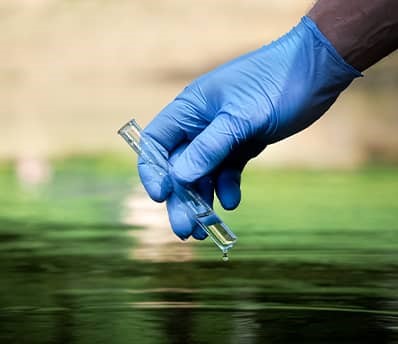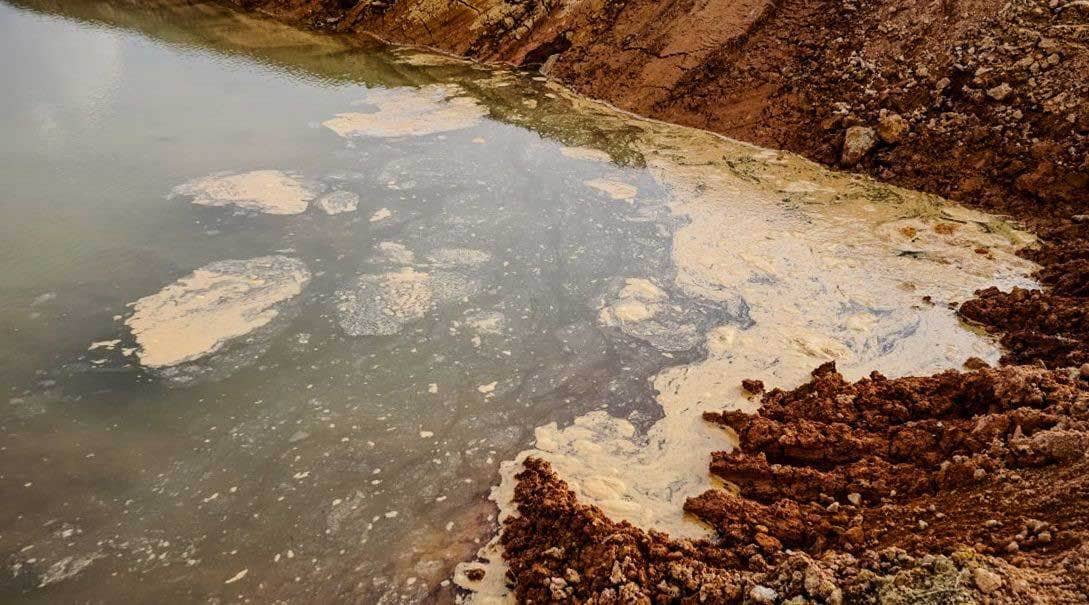Various types of work across various industries can sometimes involve potentially contaminating or polluting the environment with hazardous materials. Organizations responsible for these incidents are required by law to address the contamination. However, they’re typically not qualified to do so alone. They instead coordinate with environmental remediation specialists. What is environmental remediation? What does the process involve? The following guide will explain the basics, helping you better understand this essential topic.
Table of Contents
What Is Environmental Remediation? – and How It Can Help Your Company
Environmental remediation is a critical process to restore the environment by removing contaminants or pollutants from soil, water, and other media. It helps protect the environment and public health by reducing the presence of hazardous substances. If your business faces environmental issues, hiring an environmental remediation company can help you address these problems effectively.
At Alpha-Omega Training & Compliance, we understand that businesses face a variety of environmental issues that require remediation. Some of the most common issues that we address include:
-
Contamination from oil and gas production:
The oil and gas industry is one of the largest contributors to environmental pollution. Environmental remediation companies can help address the contamination caused by these industries by removing the pollutants from the soil and water.
-
Chemical spills:
During the transport or storage of hazardous materials, chemical spills may occur, posing a risk to both the environment and human health. Environmental remediation companies can help contain and clean up these toxic spills to mitigate their impact.
-
Groundwater contamination:
Toxic pollutants can contaminate groundwater, leading to serious health concerns. Environmental remediation companies provide services to remove pollutants and ensure that the groundwater is safe for human consumption.
-
Soil contamination:
Soil can become contaminated due to various factors, such as agricultural activities or improper disposal of hazardous waste. Environmental remediation companies offer solutions to restore the soil to a healthy state, making it suitable for farming and other activities.
-
Air pollution:
The emission of harmful pollutants into the air poses a significant threat to public health. Environmental remediation companies can address this issue by offering services to remove pollutants and reduce the impact of air pollution.
-
Hazardous waste management:
Proper management of hazardous waste is essential to protect the environment and public health. Environmental remediation companies can help manage hazardous waste by properly disposing of it or treating it to reduce its toxicity.
The benefits of hiring an environmental remediation company are numerous. Here are some of the most significant advantages of remediation services:
-
Cost savings:
By addressing environmental issues proactively, you can avoid costly cleanup efforts and fines from regulatory agencies. Environmental remediation companies can help you identify and address issues before they become more significant problems.
-
Improved public perception:
Committing to environmental stewardship can enhance your company’s reputation and make it more attractive to customers and investors. Environmental remediation companies can help you achieve your sustainability goals and demonstrate your commitment to the environment.
-
Regulatory compliance:
Environmental regulations can be complex and challenging to navigate. Environmental remediation companies are experts in these regulations and can help you stay in compliance and avoid penalties.
-
Health and safety:
Environmental hazards can pose a significant risk to human health and safety. Environmental remediation companies can help protect your employees and the community by removing pollutants and addressing environmental issues.
At Alpha-Omega Training & Compliance, we specialize in providing environmental remediation services to businesses in various industries. Our team of experts has the knowledge and experience to help you address any environmental issues your company may face. We work with many clients, from small businesses to large corporations, and have a proven track record of success.
The Environmental Remediation Process

- Initial Site Assessment: Inspection, historical research, contaminant identification.
- Investigation (Phase I and II ESAs): Quantify extent and types of contamination.
- Remediation Plan Development: Cleanup strategies, safety measures, timelines, and budgets.
- Implementation: Execute cleanup, with ongoing monitoring for adjustments.
- Final Validation: Confirm contaminant reduction to acceptable levels.
- Long-Term Monitoring: Periodic checks to maintain site safety post-remediation.
With the foundational steps outlined above setting the stage, we transition into the ESA and evaluation phase. This phase intensifies the focus on specific contaminant characteristics and the impacted environment, paving the way for a strategic and effective remediation plan.
ESA and Evaluation & Remediation
Phase I ESAs will typically provide the remediation team with an overview of the contamination at a given site. In some instances, Phase II is necessary if Phase I isn’t sufficient to provide all the necessary information. This information will guide the environmental remediation specialists’ decision-making when choosing how to address the contamination. Different types of contamination require different processes and technologies to remediate. Environmental remediation teams will also usually account for applicable standards and regulations when deciding which technologies to use. They will also use the information from the original assessment to identify the necessary safety measures they must take to protect all workers involved in the actual remediation. A basic guide couldn’t cover all the various types of remediation necessary when the environment is contaminated. The following are just a few of the types of environmental remediation:
- Excavation: If hazardous material is found in the soil, remediation may involve excavating the affected areas and safely disposing of the affected soil.
- Dredging: Sometimes, contamination affects rivers or similar bodies of water. An environmental remediation team may dredge the river bottom to collect the affected silt clay and similar materials in these instances.
- Thermal desorption: Sometimes, basic excavation doesn’t allow a remediation team to collect the harmful contaminants thoroughly. They may use thermal desorption technology in these instances. This involves using a tool that separates contaminants from the soil. This makes the process of collecting and removing them much easier.
- Pump and treat: The pump and treat method is used when groundwater has been contaminated. Environmental remediation specialists pump the affected groundwater so that they may carefully filter it, removing all contaminants.
- Nanoremediation: Some types of hazardous materials can be very difficult to remediate properly through some of the methods described above. An environmental remediation team might choose nanoremediation as the appropriate method when this is the case. With nano remediation technology, they can use extremely small reactive agents to degrade/destroy the contaminants essentially. Currently, this process is most often used in groundwater remediation, although there is ongoing work to determine if it could also be effective in soil remediation.
- Bioremediation: This method utilizes microorganisms or plants to detoxify or remove pollutants from soil, water, or air. Bioremediation is effective for organic pollutants, including petroleum hydrocarbons, by transforming them into less harmful substances.
- Soil Vapor Extraction (SVE): Used primarily for soil remediation, soil vapor extraction removes volatile and some semi-volatile contaminants from the soil by vacuum extraction. This method is particularly effective for sites contaminated with petroleum products such as gasoline or industrial solvents.
Again, those are merely some noteworthy examples. Environmental remediation teams may leverage numerous other processes and tools, depending on the nature of the pollution. They will also usually work closely with the community to ensure all relevant community leaders understand the nature of the remediation. Because environmental remediation naturally involves handling contaminants, it’s often necessary to ensure no community members are exposed to them during the process. The next point describes this in greater detail:
Community Safety Efforts
Some remediation projects require a degree of rezoning to occur. This prevents members of the nearby community from being harmed during the process. As you may suspect, negotiating with the community to properly rezone the affected area can sometimes be challenging. Citizens are often (perhaps understandably) resistant to rezoning if it impacts their daily life in a substantial way. A simple example would be a rezoning for environmental remediation causing traffic problems because citizens can no longer use certain roads during the remediation. This is yet another reason environmental remediation specialists must be involved in addressing contamination from the start. Their knowledge helps them more effectively communicate to all major community leaders and members why a degree of rezoning may be necessary. Of course, their understanding of these issues also helps them more accurately determine what type of rezoning may be required. Failure to protect those living nearby the affected area would otherwise result in greater legal consequences.
Final Assessment
The environmental remediation process typically ends with another basic assessment of the contaminated site. The team needs to confirm that their efforts were successful. If they still find evidence of remaining contamination, they must perform additional remediation.
This phase involves a comprehensive evaluation of the site post-remediation and involves the following steps:
- Comprehensive Testing: The site undergoes extensive testing and analysis once more, similar to the initial assessments conducted at the beginning of the remediation process. This includes collecting and analyzing soil, water, and air samples to measure the levels of contaminants and compare them against pre-remediation data.
- Regulatory Compliance Check: The results are meticulously reviewed to ensure they comply with all relevant environmental regulations and standards. This step is vital for obtaining official clearance and demonstrating that the site no longer poses a risk to human health or the environment.
- Documentation and Reporting: Detailed reports documenting the remediation process, methodologies applied, and the final results are prepared. These reports are crucial for regulatory submission and for keeping records of the actions taken to mitigate the contamination.
- Decision on Further Action: If the final assessment reveals that contaminant levels still exceed safe or legally permissible limits, the remediation team must devise and implement additional measures to further reduce or eliminate the contamination. This could involve revisiting the remediation plan and potentially employing alternative or more intensive remediation techniques.
- Closure and Monitoring Plans: Upon achieving successful remediation, as evidenced by the final assessment, closure documents are prepared, and, if necessary, a long-term monitoring plan is established to ensure the site remains free of contamination and safe for future use.
The final assessment is a critical component of the environmental remediation process.
Work With AOTC For Expert Environmental Remediation Help
While this is a basic guide to answering the question “What is environmental remediation?”, it should help you more thoroughly understand why it’s important that experts handle the process, as it requires special skills and knowledge. If you ever need environmental remediation services or environmental compliance services we at AOTC in Florida can provide them. Call us at 321-445-9845 for more information.
